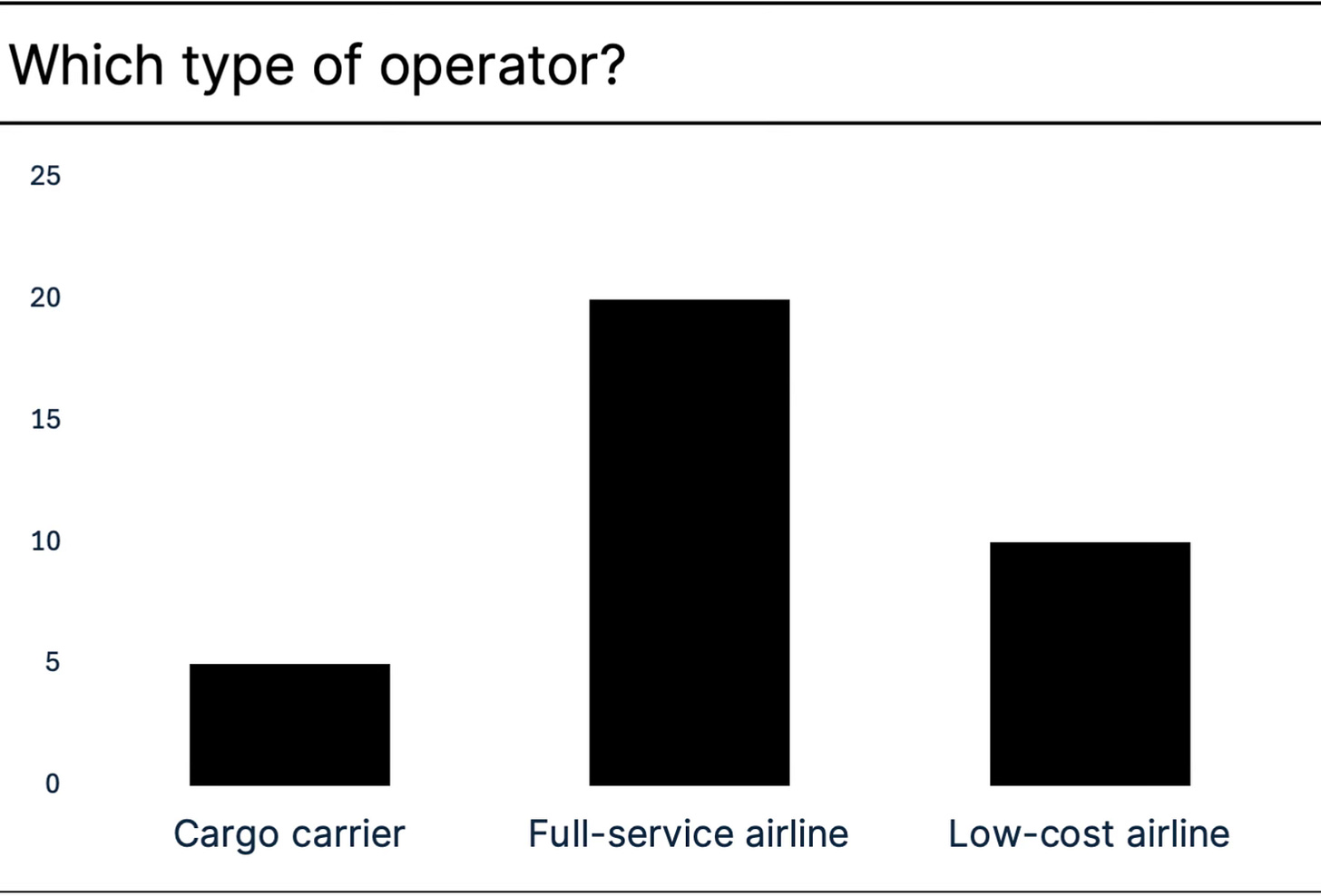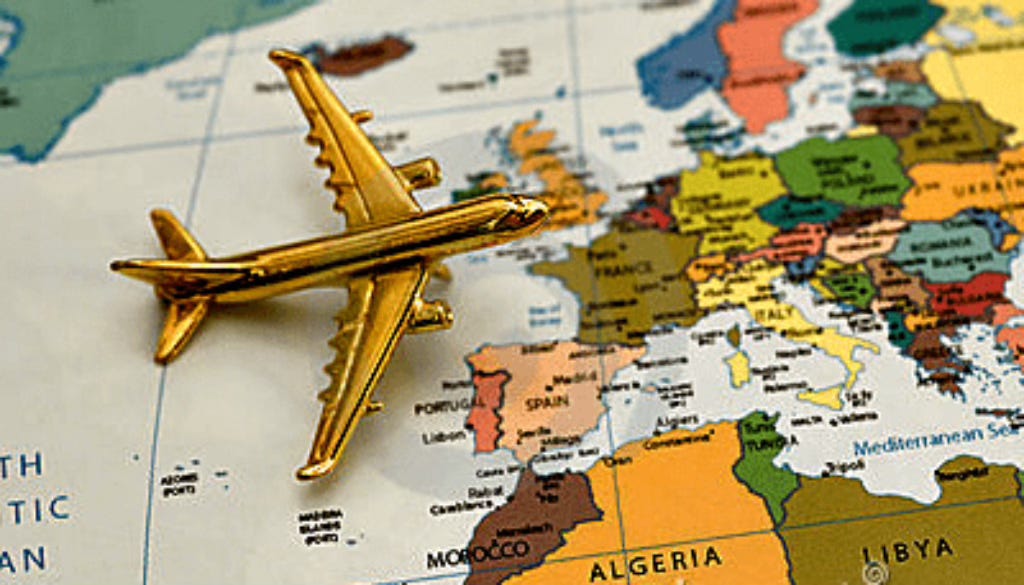One airline is leading the way and has committed to contrail reduction targets 🏆
✅ See who in Blue Lines' revamped Airline Contrail Index
“Which airlines are actually doing something about the climate problem of contrails?”
That is a question I have gotten a lot when people ask me about contrails’ climate impact and what can be done about it. ❓The question also inspired us to begin tracking all public contrail announcements involving airlines and collecting all airline contrail initiatives in Blue Lines' Airline Contrail Index.
The philosophy behind the index is that to solve any problem, the first step is to acknowledge that you have a problem. Of the thousands of airlines in the world, only a tiny percentage has acknowledged 📣 that the climate impact of aviation is substantially more than the engine CO2 emissions and that contrails (and other non-CO2 effects) also contribute significantly to global warming.
🥇 These first-mover airlines are the ones we highlight in our index with the hope that many other airlines will follow and quickly move up the tiers to become full contrail-avoiding operators one day soon.
We started tracking airline contrail announcements in August 2023 when nine airlines publicly admitted to contrail warming created by aircraft. 📈 Today (September 2024), this number has risen to 35 airlines having embraced the problem. If airlines keep joining the index at the same pace, we’ll be at around 45 airlines by the end of 2024.
📍 Furthermore, we see different types of operators working with contrails. The current index comprises 20 full-service airlines, 10 low-cost airlines, and five cargo carriers.
Contrail warming is mainly a North American and European problem. This is where the vast majority of contrail warming is concentrated. ✈ Therefore, it is also encouraging to see that 20 European and 11 North American airlines are leading the way, while Asia is represented by three airlines and Africa by one.
Blue Lines’ Airline Contrail Index is divided into four frequent flyer-inspired tiers:
✅ Bronze, which currently comprises seven airlines, is for operators who, at the very least, have publicly acknowledged the existence of climate impact from contrails.
✅ Silver is for those participating in smaller contrail avoidance trials and/or collaborating with scientists to help advance the research. Currently, there are 10 airlines in this tier.
✅ Gold (17 airlines) requires operators to participate in scale trials while collaborating with scientists.
✅ Platinum (1 airline), the current top level, requires all the above while publicly announcing a set of contrail reduction targets. We need more airlines to move up the tiers and announce contrail reduction targets.
And here is the complete list of operators in the Airline Contrail Index. Delta Airlines is currently the only one at the platinum tier as they have promised to reduce contrail warming by 80% in 2035 and by 100% in 2050 🎉.
80% reduction in ten years could sound overly ambitious. Still, it is absolutely feasible over the next ten years, and other airlines should not be afraid to copy this initiative to focus their attention on addressing contrails over the coming years.
ICAO Non-CO2 Symposium
For the first time, United Nation’s aviation regulatory body, ICAO, has arranged a symposium to discuss the non-CO2 effects of aviation, mainly contrails. This will take place 16-18. September in Montreal, Canada. This could be a suitable venue for airlines and other stakeholders to announce new contrail-related initiatives. I will be there and am always interested in meeting up if you or someone you know wants to discuss the latest in contrail management.
Mandatory Contrail Reporting from January 1, 2025 in Europe
The EU finally decided to require airlines to report the full climate impact of all flights within Europe from January 1, 2025. In practice, this means that airlines will now have to report and publicize not only the CO2 emissions from their engine exhaust but also the non-CO2 effects of flying - notably the warming effect of contrails. The public might be surprised to learn that the climate impact of taking a plane is a lot higher than they have previously been told. At Blue Lines, we hope this will incentivize airlines to scale up contrail avoidance and eliminate most of this “new” non-CO2 warming.
Go to Blue Lines’ educational website to explore contrails in depth.
(As regular readers of the Blue Lines newsletter will know, contrails are the wispy white stripes that airplanes sometimes leave behind in the sky (made from water vapor and engine soot). Some of these condensation trails can spread out and become high-altitude ice clouds (cirrus), which reflect some of the sun’s energy back into space but also trap outgoing energy in the atmosphere, resulting in a net heating of our planet equivalent to 1-2% of human-induced global warming. However, we can relatively easily avoid most warming contrails by flying around the contrail-prone areas in the atmosphere. This climate solution – often called contrail management or contrail avoidance – is what Blue Lines promotes and wants to see spread worldwide.)
See you soon.
Joachim Majholm,
Blue Lines











